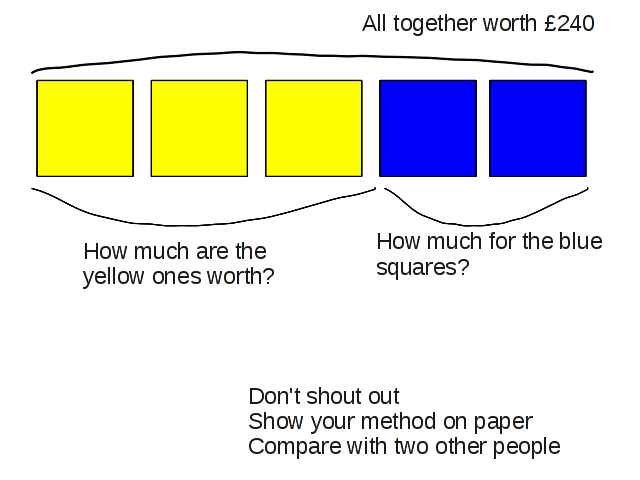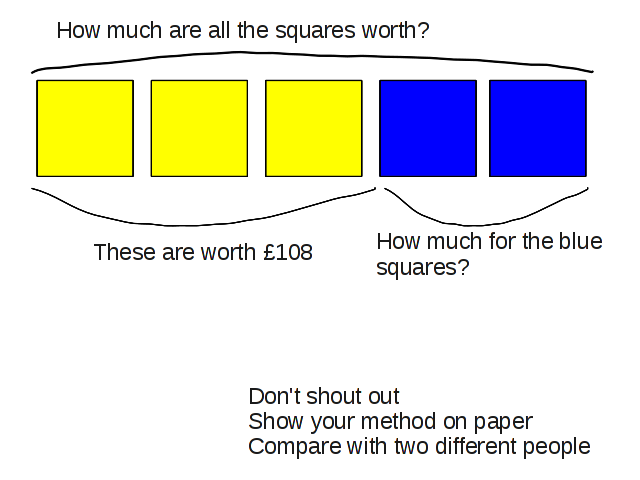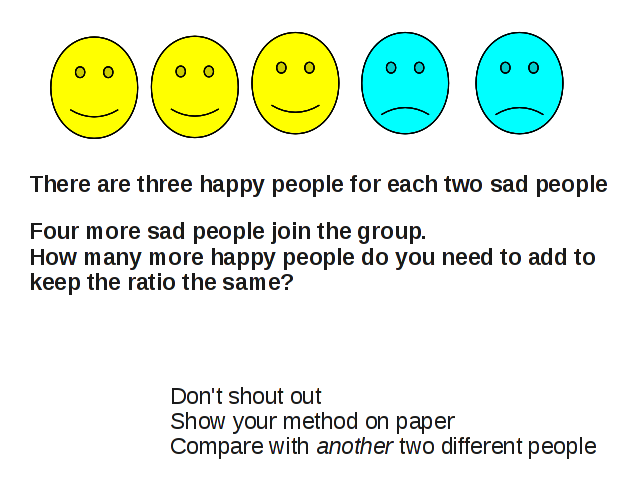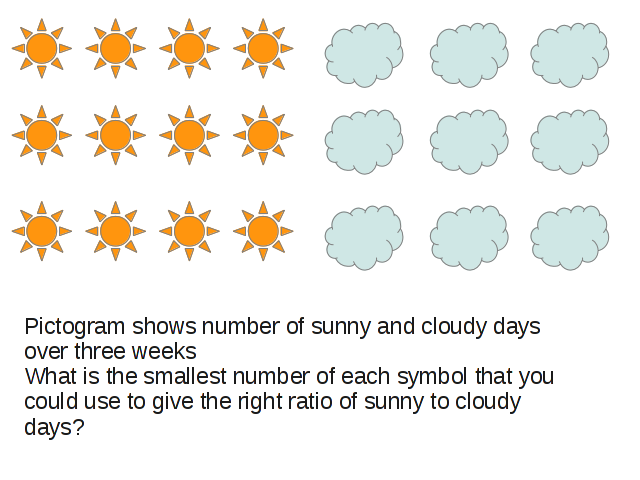
[ home ]
GCSE Maths foundation (and Functional Skills) students find ratio questions hard to understand. Younger GCSE Foundation students in colleges often say 'I can't do ratios'. I have a hunch this is because of the wording of your typical textbook question.
To test my hypothesis, I used four ratio questions presented visually based on previous starter activities using sticky notes. I printed the questions on paper, two to a side, as a pair then group activity. Students were encouraged to write down the method they used, either visual or arithmetical. About half the students chose visual methods. The four questions and the resulting discussion lasted about 20 minutes, after which I went on the whiteboard to summarise the methods (whole class: people just volunteered different methods) and then supplied exercises from a textbook including some tricky GCSE exam questions.
The questions are reproduced below as 640 by 480 pixels for use on most projectors, or for printing out from PowerPoint/Impress. I've put a few comments under each.

All students divide by 5. About half of the students then label each box with the value of an equal part and add to find the values of the colours. Others multiply as we might expect. I asked each pair/group about an independent check, and the multipliers would add the values of each colour. The adders were thinking in terms of subtracting one colour from the total as a check.

More variation in this question with some dividing by three and some adding twice and knocking a bit off. Again, some pairs went for the total by multiplying after finding the value of an individual square, and others doubled the value of a square first then found the value of all five by adding or multiplying.

This one caused most discussion, possibly from the wording. Quite a few pairs just drew out a couple of more lines of sad faces and balanced them up with the required six happy faces. Others went through the full analysis, winding up with 6 sad and 9 happy people in the group then solving the problem by subtracting. This question is very close to a GCSE past paper question.

Everyone got this. Extension activity included the idea of a pictogram key.
I got the impression that the students who were less confident with number work and division/multiplication used additive methods. I stressed the 'unitary method' in the whole class bit after the activity. Almost all the 50+ students I've used this with were able to tackle at least one 'grade C'style question in their textbook afterwards.
Keith Burnett, Last update: Sat Nov 16 2013